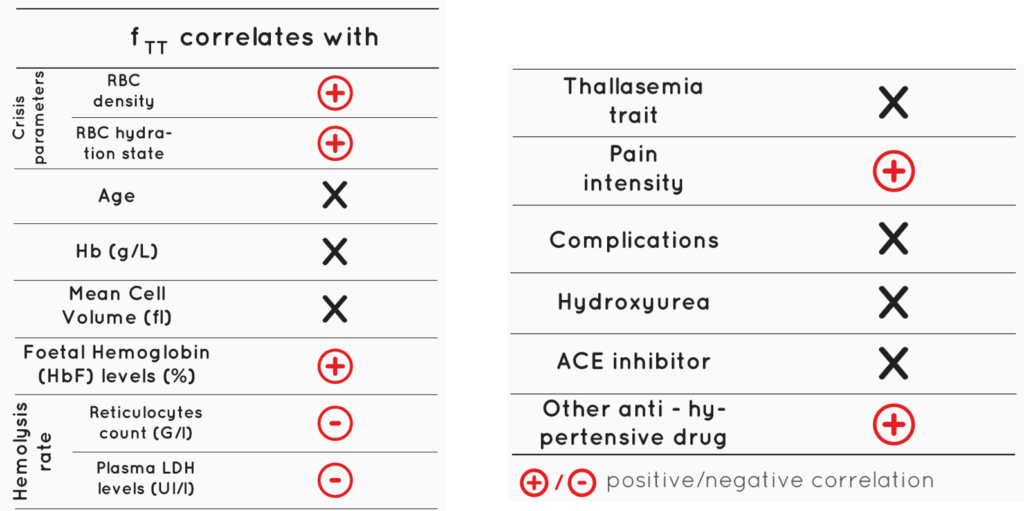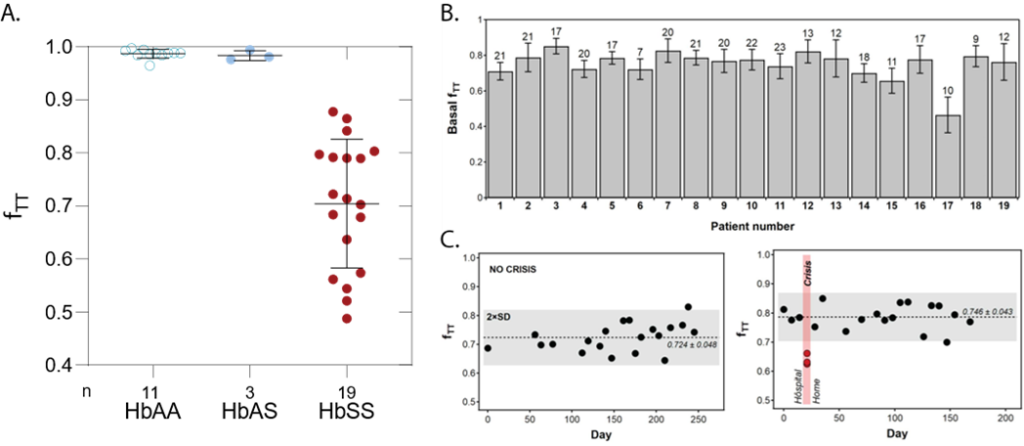Sickle cell disease
Sickle cell disease is the world’s number one genetic disorder, affecting up to 8 million people and 515 000 newborns every year. Sickle cell anemia alters the structure of hemoglobin, the main oxygen-carrying protein in red blood cells. This anomaly is responsible for the rigidification of red blood cells, generating chronic anemia, increased risk of infection and vaso-occlusive crises (CVO). The latter is the major symptom of sickle cell disease, and its most physically, emotionally and socio-economically disabling manifestation. CVO are extremely painful and unpredictable, and they can be lethal, as in the case of acute lung complications, which are the leading cause of death in sickle cell patients. Long-term complications of the disease, notably organ failure caused by repeated crises, greatly reduce life expectancy (40 to 60 years in developed countries) and quality of life for patients.
ICOVELL has the ambition to improve patients care by providing :
A marker of clinical follow-up
An indicator of patient compliance and treatment efficacy
A predictor of disease severity
A predictor of imminent vaso-occlusive crises
fTT correlates with crises parameters, hemolysis rate, pain intensity and anti-hypertensive drugs

The fTT marker, a good candidate for predicting vaso-occlusive crises

